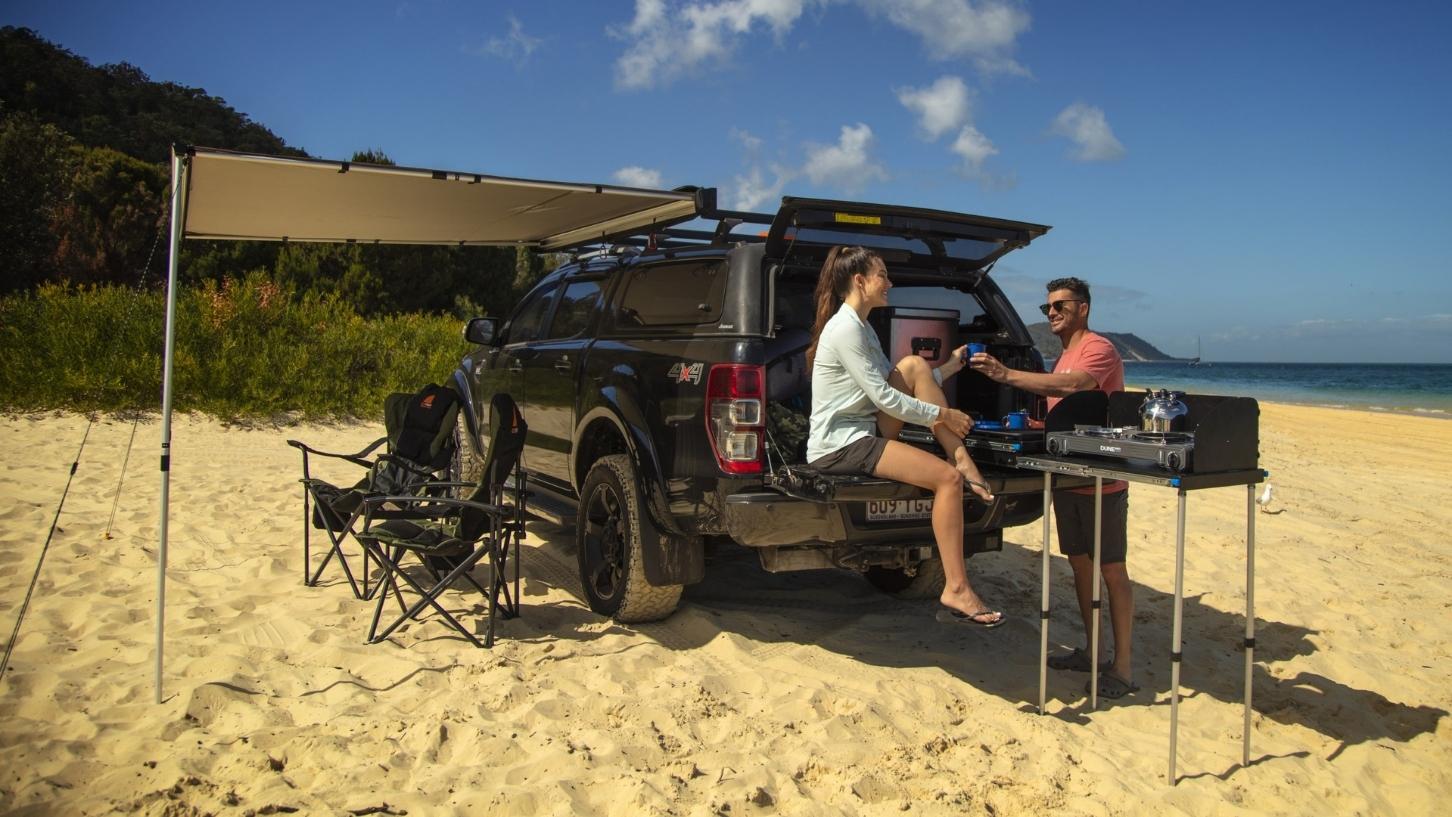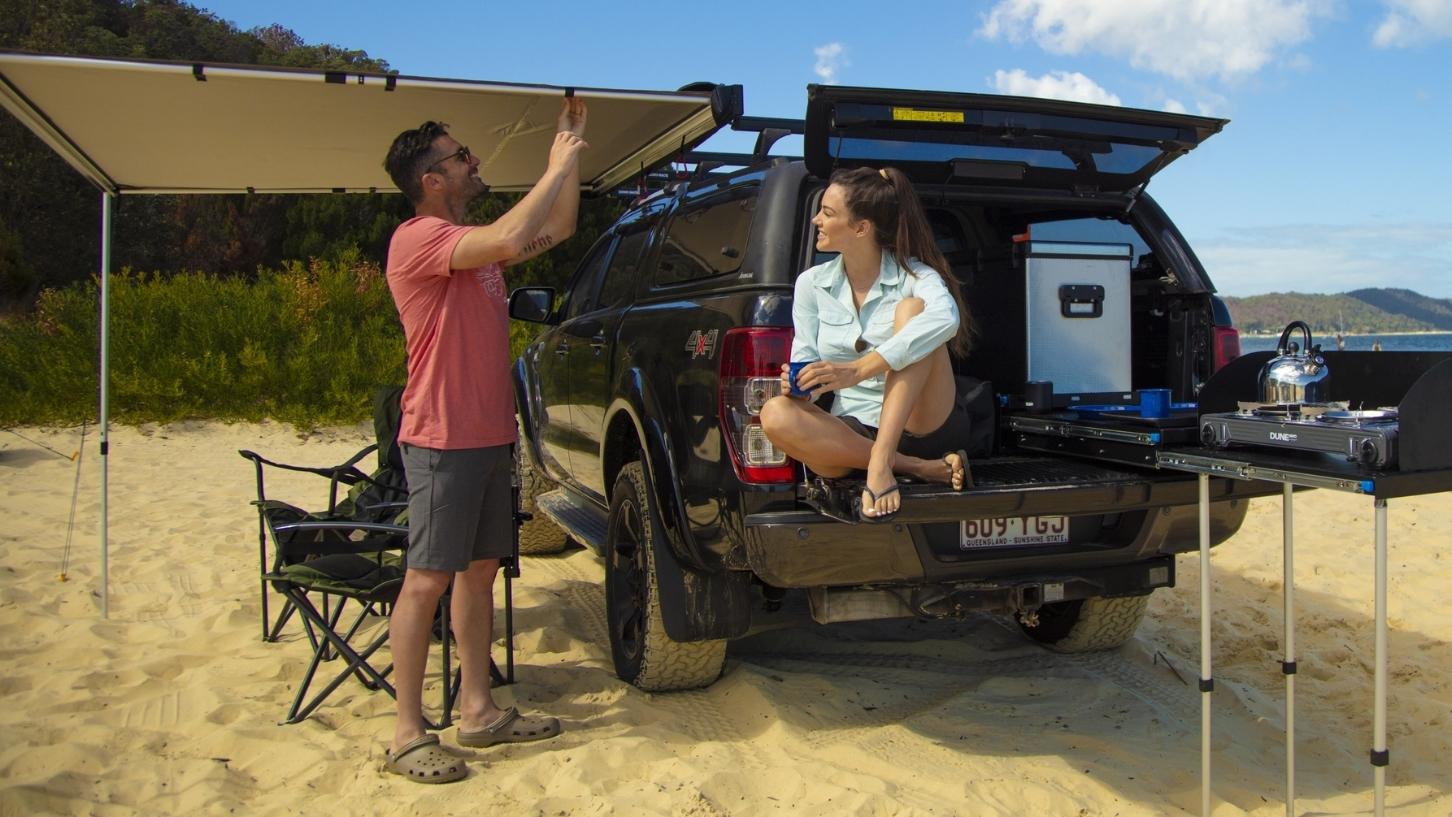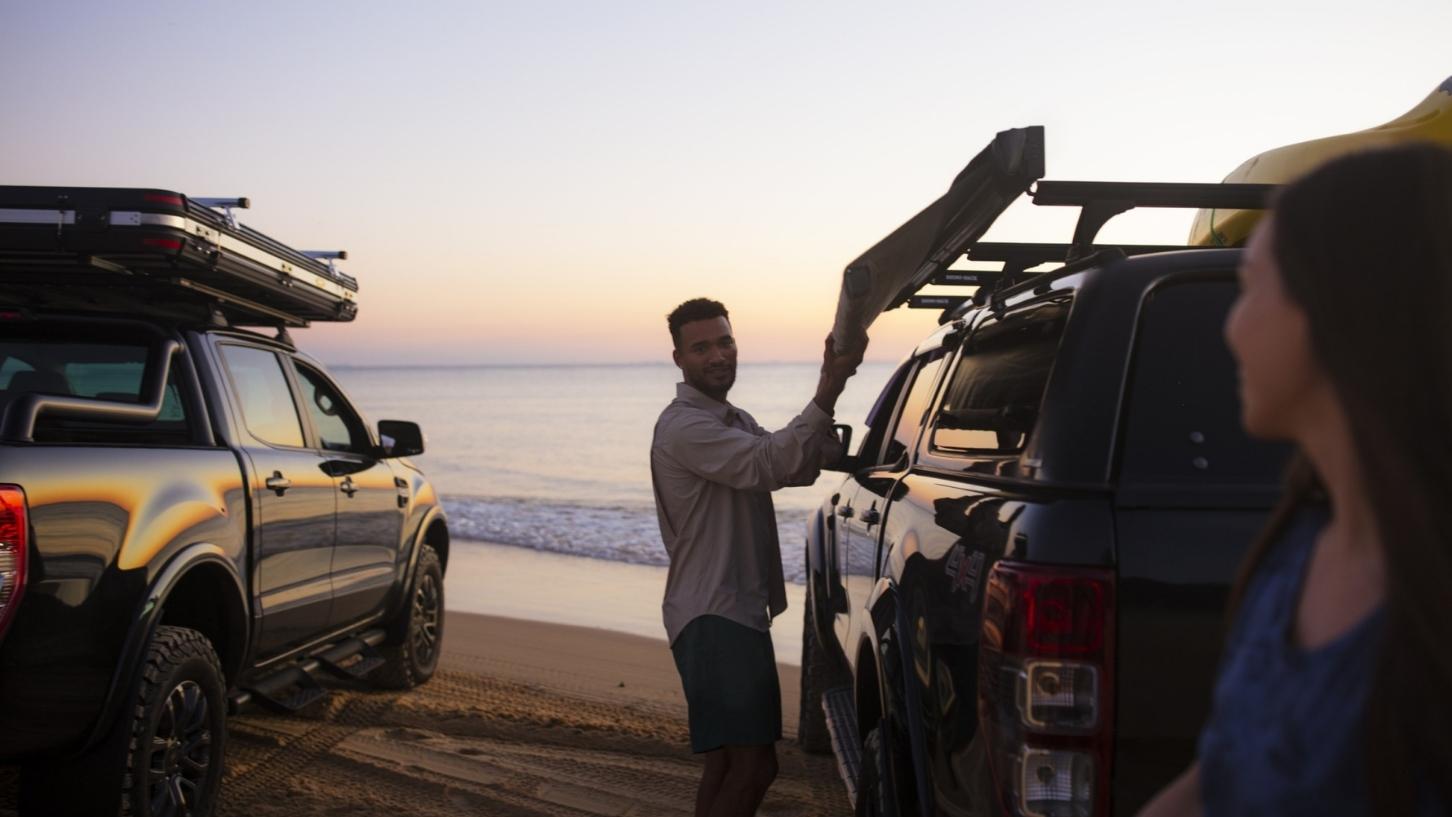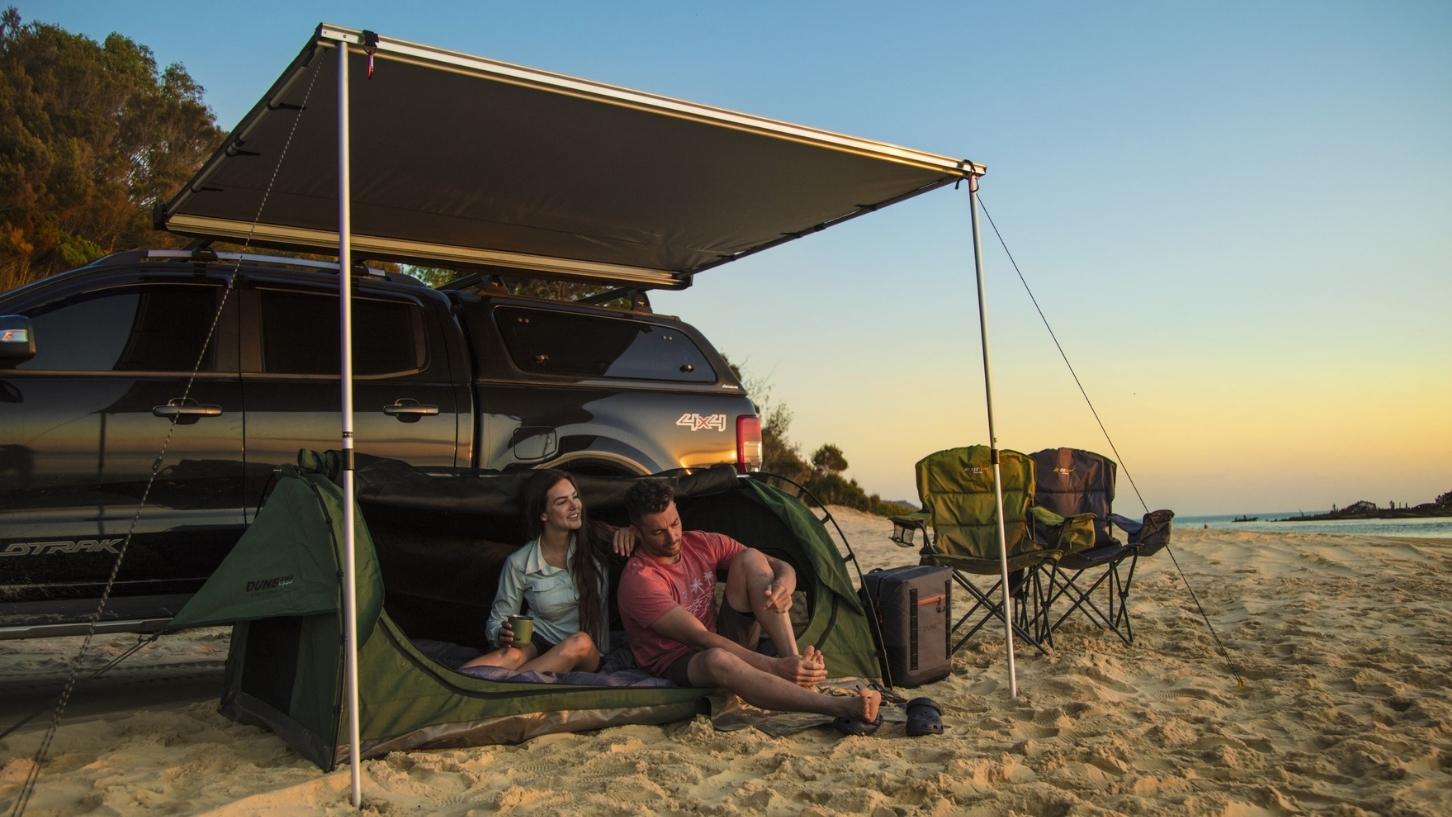| Your browser is not supported. | ||
|
Please browse our site using any of the following options:
| ||
What to look for when choosing a 4WD awning

For many campers and off-roaders, nothing beats the practicality and convenience of a 4WD awning for adding an extra shelter to your campsite or a quick spot of shade on an off-road adventure. 4WD awnings have come a long way in recent years, adding to their versatility. They are now available in a wide range of shapes, sizes and materials which can make it a little confusing when it comes to choosing the best 4WD awning for you. Let’s take a look at what to consider.
Ease of set up
One of the first things to consider is how easy your awning is to set up. One of the things that makes 4WD awnings great, is that they’re so convenient. If you get an awning that takes you more than a few minutes to set up, you’re not going to get the most out of it.
Material and construction

You want your 4WD awning to last, so it pays to make sure your awning is made from hardy weatherproof materials that will stand up to the elements time after time. Most awnings are made using polycotton, which (as you can probably guess) is a blend of polyester and cotton. Introducing polyester into the weave adds strength, helps the fabric dry faster and makes it more resistant to mould.
Ripstop canvas is a polycotton canvas that provides an even greater durability to weight ratio than other types of polycotton. Weaving a grid of thicker, stronger thread through the canvas produces a relatively light, but very strong material that results in a hardy awning that will go the distance.
Of course, you’ll also want it to be waterproof so remember to check for this — the last thing you need is a dripping awning. UV resistance is another feature to check for as this will ensure your awning doesn’t fade and degrade when it’s out in the sun. A good awning should have a UVP rating of 50+. This will not only protect the awning from sun damage, but it will also ensure you’re protected from the sun’s rays too — keeping you comfortable and shaded.
Stitching
It’s no good having top-quality fabric if the awning has been put together poorly. For this reason, it’s always a good idea to check the stitching, making sure it’s neat with no major irregularities. Also, check that the seams are reinforced so you can be confident they’ll hold together if they’re battered by wind and rain.
Poles and fittings
When it comes to poles and fittings, both the design and quality of construction will have a significant impact on the overall performance of the awning. Keep an eye out for features like twist-lock poles that fit the awning well and feel sturdy and durable. Plastic fittings will have a much shorter lifespan than stainless steel and the like so avoid these wherever possible.
Compatible accessories
No matter what kind of camper you are, it’s always worth bearing in mind whether your awning is compatible with add-ons and accessories. You may want to add lighting to your awning so have a think about how easy this will be to set up. Even if you’re not looking at accessories straight away, after a few uses you may decide that you need an awning extension or side wall to complete your setup — so it’s a good idea to make sure your awning is compatible with these kinds of add-ons from the outset.
What’s the best 4WD awning for me?
Awnings are available in a wide array of styles to suit all kinds of campers, 4WDers and adventurers. Arguably the most popular varieties are the side awning and the fox wing awning. Let’s take a look at how they differ.
Side awnings
Side awnings would have to be the most versatile and easy to install option available. Side awnings are usually installed with a rail mounted to the roof racks along the passenger side of the vehicle, although they can just as easily be installed on the drivers’ side, and this just comes down to personal preference. Just have a think about how and when you’ll use it when deciding which side is best for you.
To set up your side awning you simply pull out the rail at the front of the awning, pull out the legs and attach the two struts along the side of the awning for stability. All in all, a side awning shouldn’t take more than a couple of minutes to set up.
Fox wing awnings
Fox wing awnings (also known as batwing awnings or 270 degree awnings) are so called because when they’re set up they resemble the wing of a flying fox. While they are more complex than a simple side awning, they also offer more cover and will create a large area of weather protection that extends out from the side and rear of the vehicle.
Much larger than most other kinds of awning, the panels (or ‘wings’) of a fox wing awning are hinged to create a large undercover space spanning 270 degrees.
Tips for mounting and maintaining your awning

Once you’ve found the best awning for you, you’ll want to make sure it serves you well for as long as possible. Here are a few tips and tricks to get you started.
Mount it flush
While mounting an awning is fairly straightforward, it’s important to get it as flush as possible to your roof racks and car. This will stop it from protruding from your vehicle when it’s packed down and avoid damage from getting caught on branches and other objects on the trail. It will also help minimise the gap between the awning and the car, so will help to keep the rain out when you’re camping.
Pack it dry
Whenever possible, make sure your awning is dry before you pack it away. Leaving a wet awning rolled up will cause mould to develop which can ruin an awning. It’s practically inevitable that there will be times you need to pack it away wet. If this is the case, just make sure you open it out as soon as possible so it can dry out properly.
Use pegs
If you’re setting up for more than a couple of hours, it’s highly advisable to peg your awning down and use guy ropes if needed. An unsecured awning can move around in high winds and damage your vehicle and the awning itself.
Final thoughts

A 4WD awning can add an extra level of comfort and versatility to your camping or 4WD setup. They’re super convenient and once you’ve found the right one for you, you’ll be surprised how often you use it. If you’d like more help deciding on the best awning for your needs, find your local Anaconda store to chat with one of our friendly team members — and why not check out our extensive range of camping gear for your next outdoor adventure while you’re at it!